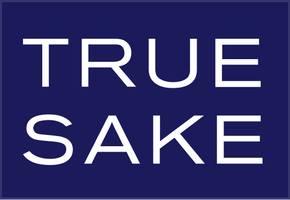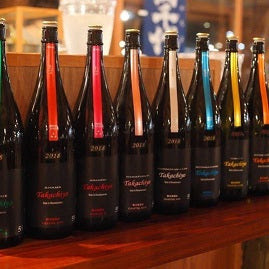Sake Opportunities – Takachiyo Uses True Sake To Test Market
Every once in a while, being the first dedicated sake store outside of Japan, has its perks. We sometimes get exclusive sakes like our very cool Junmai Daiginjo from Niigata called Miroku (if you haven’t tried it yet you really should). We also get “used” to test sakes in the American market! Say what? Well, some sake makers don’t know if their sake will be well received in the west, so they are apprehensive to try and export. Some use events, like our very own Sake Day, to see how well their sakes “do” with the knowledgeable Bay Area drinkers. And still yet, others try a unique limited exporting model to see if their brews have enough traction and most importantly appreciation to send more of their products to the States.
We are very lucky to be guinea pigs for an amazing brewery called Takachiyo in Niigata that is incredibly popular with sake fanatics in Japan. They are a name and brand that you must try and have access to. And judging by Instagram they are very much sought after in sake bars in every corner of Japan. They are sort of an enthusiasts sake brand. They want to know how well their unique and extremely popular sakes would do in the west. And voila! Because of our local importers called EHH out of Chico, CA, we are now on the Takachiyo educational express! They are sending over limited releases of some of their best sakes to check out demand. And guess what? You get to be the judge! Lucky you!

Takachiyo is releasing a series of sakes called “Takachiyo 59.” Essentially, they are making several sakes exactly the same way except for the rice varietal. My friend, Masao Aisawa of Takenotsuyu in Yamagata, was one of the first brewers to do this. Takachiyo is doing them all nama (unpasteurized) and calling each brew a “Chapter.” They are also doing the production in a little different way than the brewing norm. Takachiyo 59 features smaller portions of production to better control the brewing process. For example, instead of the typical 10kg hegi for making koji they use 8kg, and they really focus on the temperature of the koji. They also push their shubo pretty high with a lot of heat in the process. Like many new brewers, they are enamored with the new 1801 yeast that is currently the yeast rage! It has more aroma and more capronic acidity and a reduced amino acidity to produce a better balance between acidity and sweetness.
The brewers are also brewing at lower temperatures for this series, and each brewing batch varies in duration depending on the rice varietal. They are pretty emphatic. One of the very cool aspects of this series is that they pull the best part of the tank (the middle) to use for bottling. This also equates to the look of their sakes based on their own definition of “exhibition quality,” which sometimes means misty or slightly cloudy in appearance. They want the sake to be eye catching as well as great tasting. Takachiyo uses 59% rice polishing ratio for these sakes and they also have only sold the sake to 59 sake shops! So that makes True Sake one of the 59! How cool is that?
It looks like these amazing sakes will be coming over in sets of two! And I do not know the order as of yet, but we currently have Chapter Two and Chapter Three at the store. Chapter two features a rice varietal called Aiyama, and Chapter three is a blend of Aiyama and Omachi. I drank them in that order and my reviews are to follow. That said, every time that I have tasted Takachiyo I have been impressed. We had a lot of different offerings last year at Sake Day, and people responded very well to them. I actually got to steal two bottles for my home study and they went down great! I’m pretty stoked that we are on the radar of brewers such as these guys, and it means the world to me that they want to use True Sake as a point of reference.
Please give them a try and be a part of the process! It’s a little bit of sake making history in action and you are the key component. And there is no down side as the brews are awesome and they speak for themselves. Throw your hat in the ring! And I just found out that there are Nine “Chapters” in all. That’s nine ways to help shape the sake world!
Takachiyo "Chapter TWO"
From Niigata Prefecture. Junmai Ginjo Nama. SMV: -1 Acidity: 1.6
The nose on this “trail basis” sake is a great collection of apple, sugar cane, ripe fruit, and floral aromas. These Takachiyo sakes were imported in limited quantities to determine if the western market likes them. The brewers make ultra popular sakes that are almost “cultish” in Japan within the sake drinking market. So they looked to the US, and to True Sake to determine if US drinkers like their style. And I’m betting hell yes! This sake called Chapter Two is made with a rice varietal called Aiyama and it is a very vivid and lively sake that is bright and wine-like with fruit tones galore and very light in the palate. Light and bright and dances in the palate with hints of granny smith apple, pear, and pineapple and a sweet finish. A perfect daytime sake that is fun to look at and more fun to drink. WORD: Tingly WINE: Beaujolais/ Fruity whites BEER:Fresh ales FOODS: Champagne fare, cheese and fruit plates.
$36/720ml
Takachiyo "Chapter III"
From Niigata Prefecture. Junmai Ginjo Nama. SMV: +/-0 Acidity: 1.5
The nose on this very interesting sake is a tight collection of apple, melon, oatmeal, and berry aromas. Takachiyo sakes were imported in limited quantities to determine if the western market likes them. The brewers make ultra popular sakes that are almost “cultish” in Japan within the sake drinking market. So they looked to the US, and to True Sake to determine if US drinkers like their style. I’m thinking tannin loving red wine drinkers will love this “Chapter 3” which has a blend of two rice varietals Aiyama and Omachi. It is crisp, tangy, zesty, and very bright in the glass. There are peek-a-boo citrus elements of tangerine and other dried fruit tones, but the overall drinking experience is compact and dry. There is some astringency at play and fans of the Japanese term Shibumi would enjoy greatly. There is a lot of bright complexity with this sake. WORD: Dry WINE: Tannin Reds/Crisp whites BEER:Crisp Ales FOODS: Shellfish, oysters, sushi, sashimi.
$36/720ml

